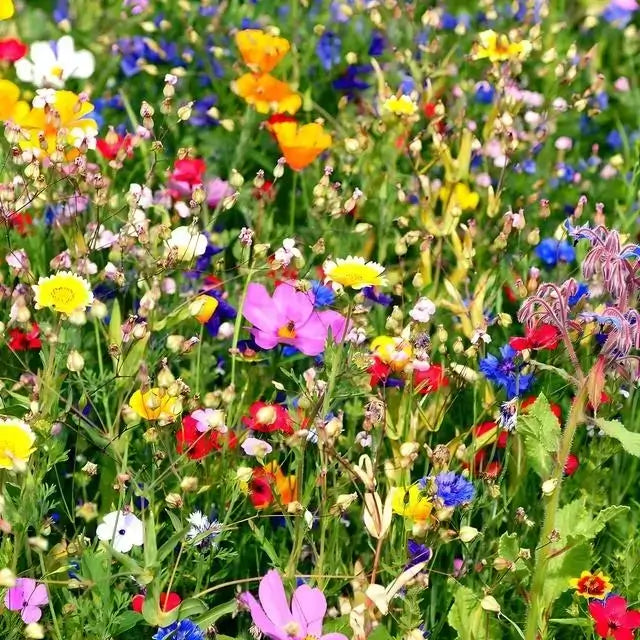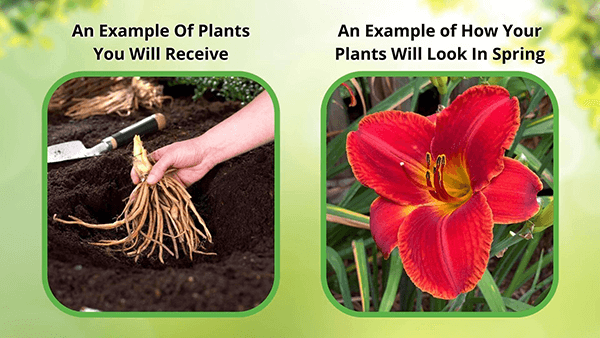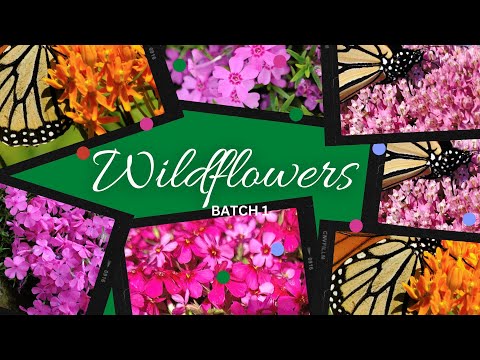Wildflowers Plants (Pack of 25 Colorful Wildflowers For Sale)
25 Colorful Wildflowers - With our exquisite selection of plants, enter a world of untouched beauty and wonder. These beautiful plants can transform your garden into a vibrant tapestry of colors and textures, creating a haven for pollinators, wildlife, and yourself. Bring nature a little closer with this package. Perfect for cozy cottages and professional landscapers, this blend of plants is ready to stand out.
Brighten Your Garden Year-Round with Colorful Wildflowers
This assortment showcases nature's endless energy in a convenient package. The more, the merrier; this collection removes the headache of picking and buying individual plants. These gorgeous flowers will boost your creative vision for a knock-out display and beautiful bouquets.
Landscaping Benefits Of Colorful Wildflowers
A mix of different plants keeps maintenance simple through the growing season. Since all 25 species won’t bloom simultaneously, one planting can create a wave of alternating colors that don’t require frequent replacement over the spring and summer. This helps prevent bare patches or drab beds professionals may need to fill with other plants.
This Package of 25 Colorful Wildflowers Can Do Well Anywhere
While Colorful Wildflowers flowers look beautiful in formal gardens, few plants fit the popular cottage core aesthetic like the mix in this package. The vibrant range introduces whimsy and charm to any outdoor space, whether formal beds, large planters, or informal plots. This is a beautiful option for new enthusiasts or experienced gardeners seeking exuberant variety to bring their cottage core dreams to life.
These blooms are perfect for the gardener who wants more guests to visit. Not only do the flowers create a warm and welcoming environment for human visitors, but they are fantastic draws for pollinators. A flower bed is one of the best ways to entice nature a little closer to home. This collection supports local bees and helps butterflies enjoy them.
As the Colorful wildflowers turn to seeds, take up bird watching. Dedicated birding enthusiasts can pair this pack with other bird-friendly features like a birdbath to encourage more traffic—plant near a window for the best views. Celebrate with colors, and add a touch of the wild to this year’s garden design. This mix takes the guesswork out of selection; its variety keeps things interesting, and there’s nothing as classic as a fragrant collection of nature’s favorites.
Enjoy An Array Of Colors With This Collection
Exposure
Wildflowers thrive in a variety of light exposures, depending on the species. Most wildflowers flourish in full sun, obtaining at least 6 hours of direct sunlight daily. However, some species are well-suited to partial shade, thriving in filtered or dappled sunlight.
Height at Maturity
Over 12"
Usage
Flowering
Shipped As
Bare root
Ships
USPS
Planting Zones
3-9


